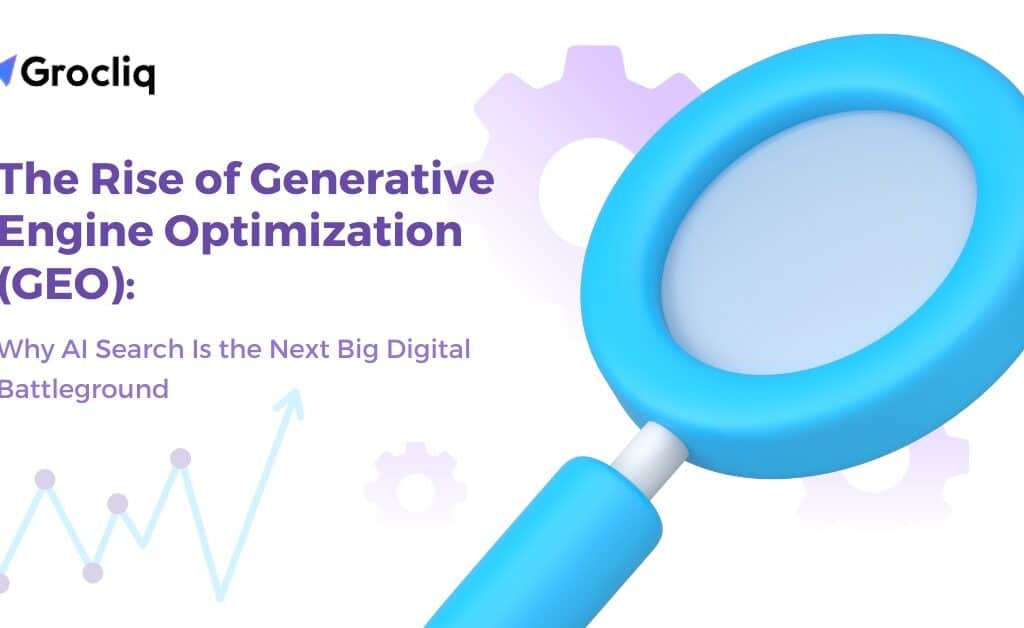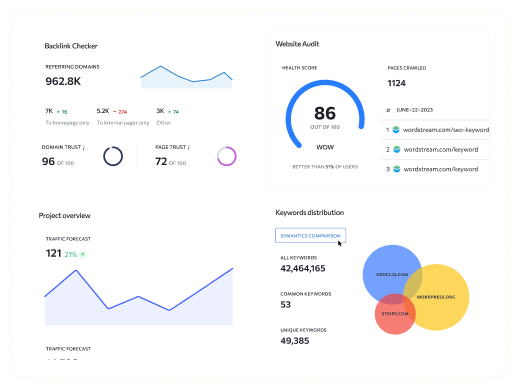In the fast-paced world of B2B ecommerce, standing out in search engine results is crucial for driving traffic and increasing sales. This guide will walk you through the essential strategies for mastering B2B ecommerce SEO, from understanding its unique challenges to implementing advanced tactics that deliver results. Whether you’re a seasoned marketer or new to the field, this comprehensive guide covers everything you need to know to boost your B2B SEO efforts and achieve higher rankings on Google. Let’s dive in and explore the key components of a successful B2B ecommerce SEO strategy.
Understanding B2B Ecommerce SEO
What is B2B Ecommerce SEO?
B2B ecommerce SEO refers to the optimization techniques used to improve the visibility and ranking of B2B ecommerce websites on search engines. This involves targeting keywords and creating content that appeals to business decision-makers, ultimately driving organic traffic and generating leads. The primary goal is to ensure that your website appears at the top of search engine results pages (SERPs) for relevant queries, thereby attracting potential clients who are actively seeking the products or services you offer.
Differences Between B2B and B2C Ecommerce SEO
- Target Audience: B2B SEO focuses on reaching key decision-makers within companies, such as marketing managers or CEOs, rather than individual consumers. These individuals are often looking for solutions to specific business problems and need detailed information to make informed decisions.
- Sales Cycles: B2B sales cycles are typically longer and more complex, requiring a strategic approach to SEO that targets various stages of the decision-making process. The purchasing decisions often involve multiple stakeholders and higher investments, making the journey from awareness to purchase more intricate.
- Keywords and Content: B2B e-commerce SEO emphasizes specific, low-volume keywords and in-depth, informative content that addresses the unique needs and challenges of businesses. Unlike B2C, where the focus might be on broader, high-volume keywords, B2B keywords are more niche and intent-driven.
Building a Strong B2B E-commerce SEO Strategy
Step 1: Develop Detailed Buyer Personas
Creating detailed buyer personas is essential for understanding your target audience. Buyer personas are semi-fictional representations of your ideal customers based on market research and real data about your existing clients. They help you tailor your marketing efforts to meet the specific needs and pain points of your audience.
- Demographic Information: Age, gender, education, and job title.
- Business Information: Industry, company size, and business challenges.
- Behavioral Insights: Buying motivations, preferred communication channels, and decision-making criteria.
Tools for Creating Buyer Personas:
- HubSpot’s Make My Persona Tool: A free tool that helps you create detailed buyer personas quickly.
- Semrush’s Traffic Analytics Tool: Provides insights into your audience’s characteristics, such as socioeconomics, regions, and visitor behavior.
Step 2: Conduct Comprehensive Keyword Research
Effective keyword research is the backbone of any successful B2B ecommerce SEO strategy. Focus on identifying both bottom-of-the-funnel and top-of-the-funnel keywords to cover all stages of the buyer’s journey.
- Bottom-of-the-Funnel Keywords: Keywords that indicate purchase intent, such as “best B2B ecommerce platform.” These are highly targeted and often have lower search volumes but higher conversion potential.
- Top-of-the-Funnel Keywords: Keywords that indicate research intent, such as “how to improve B2B ecommerce sales.” These keywords attract users who are in the early stages of the buying cycle, seeking information and solutions.
Keyword Research Tools:
- Google Keyword Planner: For finding search volumes and keyword ideas.
- SEMrush: For competitive analysis and keyword suggestions.
- Google Autocomplete: For discovering long-tail keywords.
Case Studies or Examples: Analyze competitor websites to identify keywords that drive traffic to their pages. Tools like SEMrush and Ahrefs can provide comprehensive lists of keywords that your competitors rank for.
Step 3: Optimize Product and Category Pages
Optimizing your product and category pages is crucial for improving your site’s search visibility and driving conversions. These pages are often the first point of contact for potential customers, so they need to be optimized for both search engines and user experience.
Best Practices:
- Title Tags and Meta Descriptions: Include primary keywords and ensure they are compelling and informative. Example: “Best B2B Ecommerce Platform | [Your Brand Name]”
- Unique Content: Write unique product descriptions that highlight key features and benefits. Avoid using manufacturer descriptions that can be found on other sites.
- Internal Linking: Use internal links to connect related products and categories, improving navigation and SEO. This helps distribute page authority and keeps users engaged longer on your site.
Example of an Optimized Product Page:
- Title Tag: “Best B2B Ecommerce Platform | [Your Brand Name]”
- Meta Description: “Discover the best B2B ecommerce platform to boost your business sales. Learn more about our features and pricing.”
- Content: Detailed product descriptions, high-quality images, and customer reviews.
Step 4: Create Valuable Content for B2B Audiences
Content marketing plays a pivotal role in B2B ecommerce SEO. Focus on creating content that educates, informs, and solves the problems of your target audience. High-quality content helps establish your authority in the industry and attracts organic backlinks, which are crucial for SEO.
Content Types:
- Blog Posts: Regularly updated articles that address industry trends and challenges. Example: “Top 10 Strategies for B2B Ecommerce Success in 2024”
- Case Studies: Detailed reports showcasing how your product or service helped a client achieve success. These build credibility and trust with potential clients.
- Whitepapers and Ebooks: In-depth guides that provide valuable insights and data. These can be used as lead magnets to capture email addresses and nurture leads.
Content Calendar:
- Plan your content topics and publishing schedule to ensure consistency and relevance. Use tools like Trello or Asana to manage your content calendar and keep track of deadlines.
Example Blog Post Titles:
- “How to Improve B2B Ecommerce Sales with SEO”
- “Top 10 Strategies for B2B Ecommerce Success in 2024”
- “The Role of AI in B2B Ecommerce: Trends and Predictions”
Step 5: Build a Scalable Link-Building Strategy
Building high-quality backlinks is essential for improving your site’s authority and ranking. Backlinks act as votes of confidence from other websites, signaling to search engines that your content is valuable and trustworthy.
Link-Building Techniques:
- Digital PR: Reach out to industry blogs and news sites to feature your content. This can include press releases, guest posts, and expert roundups.
- Guest Posting: Write articles for other reputable websites in your industry. This helps you reach a broader audience and earn high-quality backlinks.
- Partnerships: Collaborate with partners to get listed on their websites. For example, if you work with a software provider, ask them to include your company on their partner page.
Tools for Link-Building:
- Ahrefs: For finding backlink opportunities and analyzing your backlink profile.
- Moz Link Explorer: For monitoring your backlink health and discovering new link-building opportunities.
Step 6: Leverage Technical SEO Best Practices
Technical SEO ensures that your website is easily crawlable and indexable by search engines. It involves optimizing various backend elements to improve site performance and user experience.
Key Technical SEO Elements:
- Site Speed: Ensure your website loads quickly to improve user experience and rankings. Use tools like Google PageSpeed Insights to identify and fix speed issues.
- Mobile Optimization: Optimize your site for mobile devices to cater to mobile users. Ensure your site is responsive and provides a seamless experience across all devices.
- Structured Data: Implement schema markup to help search engines understand your content. This can improve your chances of appearing in rich snippets and other SERP features.
Technical SEO Tools:
- Google PageSpeed Insights: For analyzing and improving site speed.
- Google Search Console: For monitoring and optimizing your site’s performance.
- Screaming Frog: For comprehensive site audits and identifying technical issues.
Advanced B2B Ecommerce SEO Tactics
Using Data and Analytics to Drive SEO Decisions
Data-driven decisions are critical for refining your B2B ecommerce SEO strategy. By analyzing performance metrics, you can identify what’s working and what needs improvement.
Metrics to Track:
- Organic Traffic: Monitor the number of visitors coming from search engines. This indicates how well your SEO efforts are driving traffic.
- Conversion Rates: Track the percentage of visitors who take a desired action, such as making a purchase or filling out a contact form.
- Bounce Rate: Measure the percentage of visitors who leave your site after viewing only one page. A high bounce rate can indicate that your content or user experience needs improvement.
Analytics Tools:
- Google Analytics: For comprehensive site performance data and user behavior insights.
- SEMrush: For tracking keyword rankings and competitor performance.
- Hotjar: For understanding user behavior through heatmaps and session recordings.
Incorporating AI and Automation in SEO
AI and automation can streamline your SEO efforts and improve efficiency, allowing you to focus on strategic tasks.
AI Tools for SEO:
- MarketMuse: For content optimization and strategy. It helps identify content gaps and opportunities for improvement.
- Clearscope: For keyword research and content creation. It provides data-driven recommendations for optimizing your content.
Automation Techniques:
- Keyword Tracking: Automate keyword tracking to monitor your rankings and identify trends.
- Reporting: Use tools like Google Data Studio to automate SEO reporting and create custom dashboards.
- Chatbots: Implement chatbots for customer engagement and lead generation, providing instant responses to user queries.
Focusing on User Experience (UX)
A positive user experience (UX) is crucial for retaining visitors and improving SEO. Google considers UX signals like bounce rate and dwell time when ranking websites.
Best Practices for UX:
- Easy Navigation: Ensure your site is easy to navigate with clear menus and internal links. A well-structured site helps users find what they’re looking for quickly.
- Engaging Content: Use multimedia elements like videos and infographics to engage users. These can make your content more attractive and easier to understand.
- Responsive Design: Ensure your site is fully responsive and works well on all devices. Mobile-friendly sites are essential as more users access the web via smartphones and tablets.
Examples of Excellent UX:
- Intuitive Navigation: Sites with clear, easy-to-use navigation menus.
- Fast Loading Times: Pages that load quickly, reducing the likelihood of user frustration.
- Engaging Multimedia: Use of videos, infographics, and interactive elements to enhance user engagement.
Monitoring and Adapting Your SEO Strategy
Regular SEO Audits and Updates
Regular SEO audits help identify areas for improvement and keep your strategy on track. An audit can uncover technical issues, content gaps, and opportunities for optimization.
SEO Audit Checklist:
- Broken Links: Check for and fix broken links that can harm user experience and SEO.
- Outdated Content: Update outdated content with fresh information to keep it relevant.
- Image Optimization: Ensure images are optimized for size and have descriptive alt text.
SEO Audit Tools:
- Screaming Frog: For comprehensive site audits and identifying technical issues.
- Moz Pro: For tracking and improving your SEO performance.
- SEMrush Site Audit: For identifying and fixing SEO issues across your site.
Adapting to Changes in Search Engine Algorithms
Stay ahead of algorithm updates to maintain and improve your rankings. Search engines frequently update their algorithms, and staying informed about these changes is crucial.
Strategies for Adapting:
- Stay Informed: Keep up with SEO news and trends by following industry blogs and forums.
- Monitor Performance: Regularly monitor your site’s performance and traffic patterns to identify the impact of algorithm updates.
- Adjust Strategies: Be flexible and ready to adjust your SEO strategies based on data and feedback.
Examples of Successful Adaptations:
- Content Quality Updates: Sites that quickly improve content quality after Google’s core updates.
- Mobile-First Indexing: Sites that ensure mobile optimization to align with Google’s mobile-first indexing.
Conclusion
In this guide, we’ve covered the essential strategies for mastering B2B ecommerce SEO. From understanding the unique challenges of B2B SEO to implementing advanced tactics, you now have the knowledge to boost your rankings and drive more traffic to your site. Start implementing these strategies today and watch your B2B ecommerce business grow.
Note: Read Our Latest Marketing and SEO Blogs:
Wix vs Squarespace SEO | Wix Header Code Meta Tags for Better SEO | Using the Wix Dashboard | Wix seo issues | What is Wix Migration .
Frequently Asked Questions
Q1. What is B2B ecommerce SEO?
A1: B2B ecommerce SEO is the process of optimizing a B2B ecommerce website to improve its visibility and ranking on search engines, targeting business decision-makers.
Q2. How does B2B SEO differ from B2C SEO?
A2: B2B SEO focuses on targeting key decision-makers within companies with specific, low-volume keywords, whereas B2C SEO targets individual consumers with broader, high-volume keywords.
Q3. What are the key components of a B2B ecommerce SEO strategy?
A3: Key components include developing buyer personas, conducting keyword research, optimizing product and category pages, creating valuable content, building backlinks, and leveraging technical SEO.
Q4. Why is content marketing important for B2B ecommerce SEO?
A4: Content marketing helps educate and inform your audience, establish authority, attract backlinks, and drive organic traffic, all of which are crucial for SEO success.
Q5. How can I stay updated with changes in search engine algorithms?
A5: Stay informed by following SEO industry blogs, forums, and news sites, and regularly monitor your site’s performance to adapt to any changes quickly.





